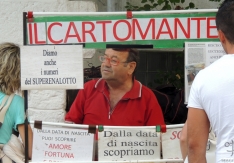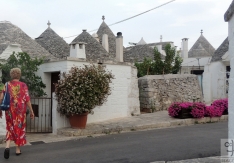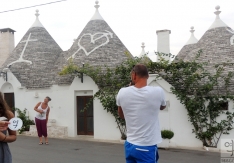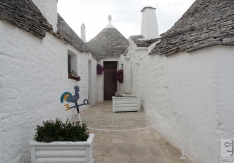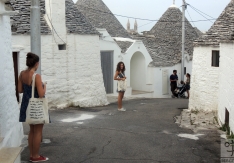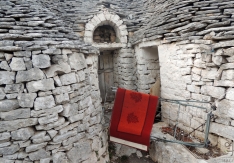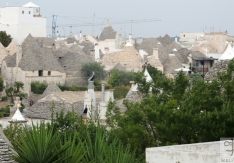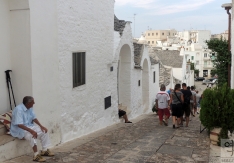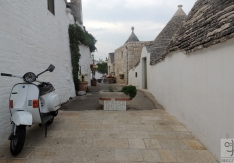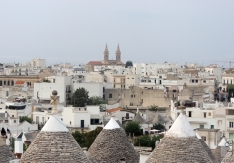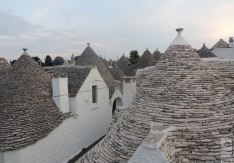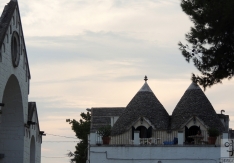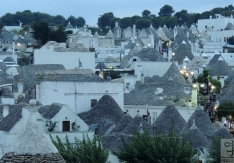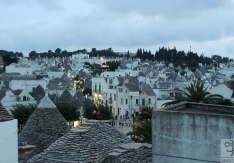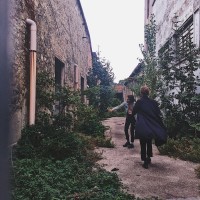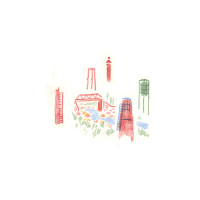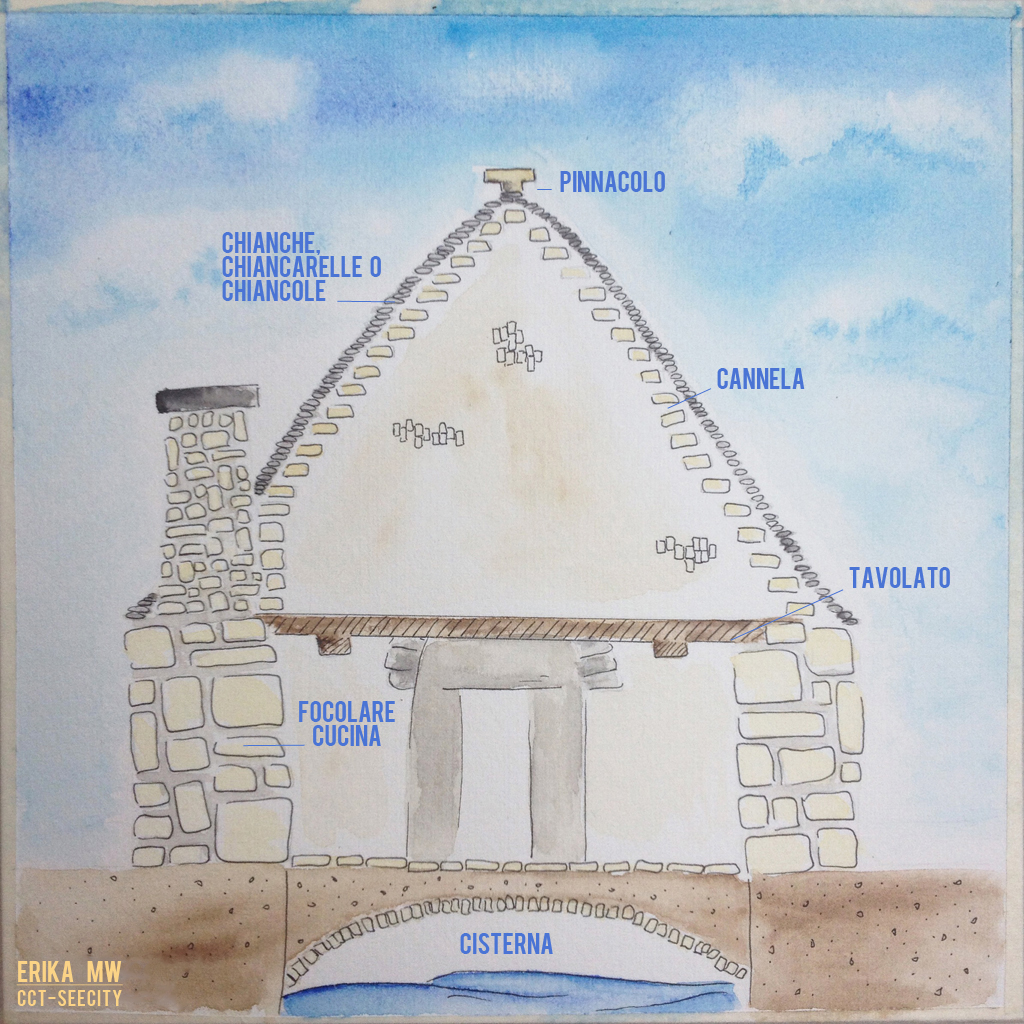
This post is sponsored by:
–
–
–
BARI “Trulli” are an architectural example of extraordinary historical value and, in the “Land of Trulli” (in Puglia), there is one village in particular that looks like no other place in the world and that, indeed, since 1996 is in the World Heritage list recognized by UNESCO. As you can easily imagine, we are talking about Alberobello (Aiarubbédde in the local dialect).

THE ORIGINS
At the end of the 1400’s, Alberobello was still a forest (Silva Arboris Belli) and a hunting land. When those lands came under the ownership of the Acquaviva family, Lords of Conversano, they started to be inhabited and cultivated. The first shelters built by the new inhabitants were certainly more rudimentary than the trulli we see today but the system of construction has, nevertheless, remained identical. And as recorded in publications from 1550, the only type of building allowed were dry and made of local limestone. Trulli, or similar dry buildings, were already present in the surrounding areasm mostly turned into temporary residences, or shelters for animals and equipment. This type of construction could be easily demolished, to punish those who had disobeyed or to avoid payment of taxes owed to the King of Naples. During inspections, the houses were partially demolished, enough to seem only a pile of stones, as according to the “Baronibus Regulation”, an authorization was necessary before erecting new house districts, in order to be registered and taxed. However, it was with the gain in power of Giangirolamo II Acquaviva Aragona (1626), that the diffusion of such buildings increased, named Trulli, (“casedde” in the local language), derived from the Greek: “thólos, troùlos” meaning dome. Or, the Latin hypothesis: “turris, turulla, trulla, trullum” meaning small tower.
HOW IS BUILT A TRULLO?
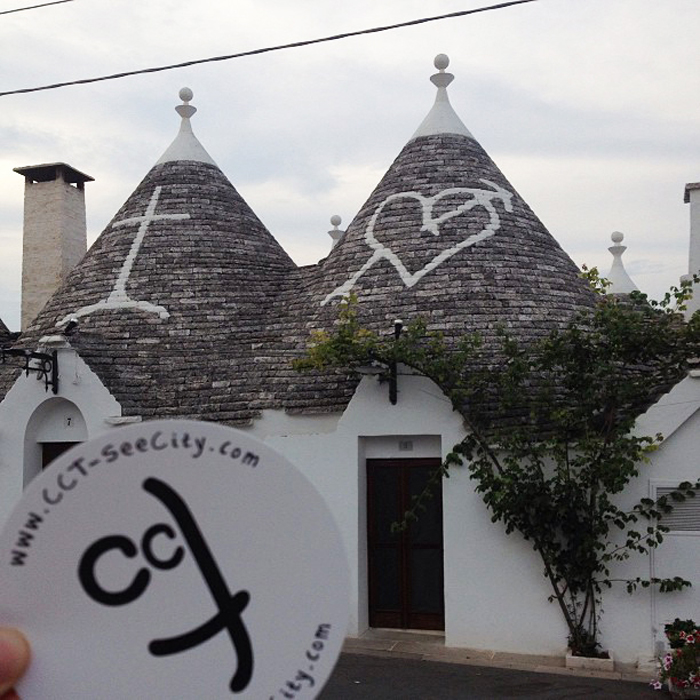 The first step is to dig the WELL, which is usually 2/3 meters wide and 2/4 meters deep (the material obtained from digging is used to build the walls); this well is meant to contain rainwater dripping along the cone and the side canals. The WALLS (about one meter in width) and the foundations are made of large stones of different sizes, which are used without mortar. The quadrangular base is inclined towards the inside, so that the diameter is reduced, and results in a smaller round opening. At this point, the internal part of the central DOME, the “CANNÉLA”, and the minor domes, if any, are erected. They are covered externally with the “CHIANCARELLE”, which begin as a light colour like the other stones, but then due to weather conditions obtain a darker colour over time. The “chiancarelle” (6/7 cm thick) are carved in order to be wider on the external side; they are inclined (so that water may run down them without penetrating) and arranged, without mortar, in concentric circles, the “filari”, from the bottom upwards to the top, where is posed the “PINNACOLO” (pinnacle), a stone that may have different forms. On a minor dome a flue is built; then, internal and external walls are sealed and painted with white lime; by reflecting sunshine, the lime maintains a pleasant inner temperature in summer, and retains the heat produced by the fireplace in winter; heat retention is also facilitated by the small entrance and the single window. The arrangement of the rooms is plain and functional: the middle room, that corresponds with the main cone, is surrounded by 2 or 3 minor side spaces, called “alcove”, which may be surmounted by a dome. Characterized by wide arches, they are usually used as bedrooms. On the other side of the main room, there is the FIREPLACE, which also is the KITCHEN. The flooring is mad with slabs of stone smoothed over time by using. The middle room and the vault are separated by a wooden-beam floor, the “TAVOLATO”, where food is usually stored. A small garden, once used also a toilet, can often be found behind the trullo. The average dimension of a trullo is 20sq.m / 40sq.m.
The first step is to dig the WELL, which is usually 2/3 meters wide and 2/4 meters deep (the material obtained from digging is used to build the walls); this well is meant to contain rainwater dripping along the cone and the side canals. The WALLS (about one meter in width) and the foundations are made of large stones of different sizes, which are used without mortar. The quadrangular base is inclined towards the inside, so that the diameter is reduced, and results in a smaller round opening. At this point, the internal part of the central DOME, the “CANNÉLA”, and the minor domes, if any, are erected. They are covered externally with the “CHIANCARELLE”, which begin as a light colour like the other stones, but then due to weather conditions obtain a darker colour over time. The “chiancarelle” (6/7 cm thick) are carved in order to be wider on the external side; they are inclined (so that water may run down them without penetrating) and arranged, without mortar, in concentric circles, the “filari”, from the bottom upwards to the top, where is posed the “PINNACOLO” (pinnacle), a stone that may have different forms. On a minor dome a flue is built; then, internal and external walls are sealed and painted with white lime; by reflecting sunshine, the lime maintains a pleasant inner temperature in summer, and retains the heat produced by the fireplace in winter; heat retention is also facilitated by the small entrance and the single window. The arrangement of the rooms is plain and functional: the middle room, that corresponds with the main cone, is surrounded by 2 or 3 minor side spaces, called “alcove”, which may be surmounted by a dome. Characterized by wide arches, they are usually used as bedrooms. On the other side of the main room, there is the FIREPLACE, which also is the KITCHEN. The flooring is mad with slabs of stone smoothed over time by using. The middle room and the vault are separated by a wooden-beam floor, the “TAVOLATO”, where food is usually stored. A small garden, once used also a toilet, can often be found behind the trullo. The average dimension of a trullo is 20sq.m / 40sq.m.
PINNACLES, now considered mainly as decorative elements, were believed to have originally been magic symbols leading back to the cult known as “betilico” or the cult of sacred stones, from the sun worshipping. At the very top of the dome, they can be made in various ways and of various shapes. In the most ancient trulli, the pinnacle was only a flat or crudely squared stone.
SYMBOLS painted on the cones belong to the symbolism used by Christian religion of Eastern derivation and they represented a protective seal, meant to evoke God and to ward off evil.


